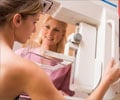In the US, an estimated 252,710 new cases of invasive breast cancer and 63,410 new cases of non-invasive breast cancer are expected to be diagnosed by 2017.

‘Different tests can be used to look for and diagnose breast cancer. If your doctor finds an area of concern on a screening test (a mammogram), you will need more tests to know for sure if it’s cancer.’





Published early online in CANCER, a peer-reviewed journal of the American Cancer Society, the findings may provide valuable guidance to women and their physicians about choosing a screening regimen. To uncover insights that might help women make informed choices about mammography screening, researchers led by Elizabeth Kagan Arleo, MD, of Weill Cornell Medicine and New York-Presbyterian, and R. Edward Hendrick, PhD, of the University of Colorado School of Medicine, used computer modeling to estimate the possible effects of three schemes: annual screening starting at age 40 years, annual screening at ages 45 to 54 years and then biennial screening at ages 55 to 79 years, and biennial screening at ages 50 to 74 years.
The investigators estimated how many breast cancer deaths might be prevented with the different screening schemes. The team found that the recommendation of annual screening starting at age 40 would result in the greatest reduction in breast cancer-specific deaths: a nearly 40 percent reduction in deaths due to breast cancer, compared with 23 percent to 31 percent reductions with other recommendations.
"Our findings are important and novel because this is the first time the three most widely discussed recommendations for screening mammography have been compared head to head," said Dr. Arleo. "Our research would be put to good use if, because of our findings, women chose to start annual screening mammography starting at age 40. Over the long term, this would be significant because fewer women would die from breast cancer."
The researchers' modeling also considered risks associated with screening, including callbacks for additional imaging and, in some cases, a needle biopsy, both of which may reveal the absence of breast cancer despite a suspicious mammography finding.
Advertisement
An estimated 252,710 new cases of invasive breast cancer and 63,410 new cases of non-invasive breast cancer are expected to be diagnosed in women in the United States in 2017, with 40,610 US women expected to die from breast cancer in 2017. About 33 million screening mammography exams are performed each year.
Advertisement
Source-Eurekalert













